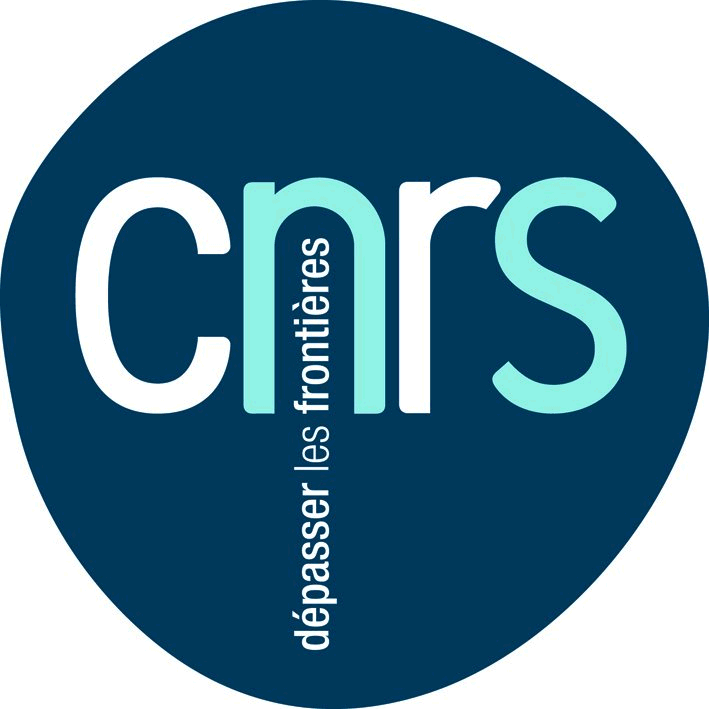Purpose Fundamental research Founded 19 October 1939 Leader Alain Fuchs | Official language French Budget 3.3 billion EUR Staff 30000 | |
 | ||
Motto French: Dépasser les frontières
English: Advancing the Frontiers Formation 19 October 1939; 77 years ago (1939-10-19) Type Governmental organisation Headquarters 16th arrondissement of Paris Subsidiaries Laboratory for Analysis and Architecture of Systems, FIST SA, CNRS Institute of Biological Sciences. Profiles | ||
The French National Center for Scientific Research (French: Centre national de la recherche scientifique, CNRS) is the largest governmental research organisation in France and the largest fundamental science agency in Europe. It employs 32,000 permanent employees (researchers, engineers, and administrative staff) and 6,000 temporary workers.
Contents
Organization
Following a 2009 reorganisation, the CNRS is divided into 10 institutes:
Previously, it was divided into INSU, IN2P3, and several scientific departments.
The National Committee for Scientific Research, which is in charge of the recruitment and evaluation of researchers, is divided into 47 sections (e.g. section 1 is mathematics; section 7 is computer science and control). Research groups are affiliated with one primary institute and an optional secondary institute; the researchers themselves belong to one section.
For administrative purposes, the CNRS is divided into 18 regional divisions (including four for the Paris region).
CNRS research units are called laboratoires informally and unités de recherche in administrative parlance. They are either operated solely by CNRS (and then known as unités propres de recherche) or UPR) or in association with other institutions, such as universities or INSERM (in which case they are called unités mixtes de recherche or UMR). Each research unit has a unique numeric code attached and is headed by a director (typically, a university professor or CNRS research director). A research unit may be subdivided into research groups ("équipes"). CNRS also has support units, which, analogously to the research units, are called unités propres de service (UPS) or unités mixtes de service (UMS). A UPS or UMS may for instance supply administrative, computing, library, or engineering services.
Currently, CNRS researchers are active in 1,256 research groups, 85 percent of which are mixed and also include non-CNRS researchers (most notably university professors); mixed groups tend to be housed inside universities and other institutions of higher education.
The headquarters of CNRS are at the Campus Gérard Mégie in the 16th arrondissement of Paris.
Employment
Researchers who are permanent employees of the CNRS are classified in two categories, in order of seniority:
In principle, research directors tend to head research groups, but this is not a general rule (a research scientist can head a group or even a laboratory and some research directors do not head a group).
Employees for support activities include research engineers, studies engineers, assistant engineers and technicians. Contrary to what the name would seem to imply, these can have administrative duties (e.g. a secretary can be "technician", an administrative manager of a laboratory an "assistant engineer").
All permanent support employees are recruited through annual nationwide competitive campaigns. Following a 1983 reform, the candidates selected have the status of civil servants and are part of the public service.
International relations
The CNRS is represented with administrative offices in Brussels, Beijing, Tokyo, Singapore, Washington, D.C., Bonn, Moscow, Tunis, Johannesburg, Santiago de Chile, Israel, and New Delhi.
History
The CNRS was created on 19 October 1939 by decree of President Albert Lebrun. Since 1954, the centre has annually awarded gold, silver, and bronze medals to French scientists and junior researchers. In 1966, the organisation underwent structural changes, which resulted in the creation of two specialised institutes: the National Astronomy and Geophysics Institute in 1967 (which became the National Institute of Sciences of the Universe in 1985) and the Institut national de physique nucléaire et de physique des particules (IN2P3; English: National Institute of Nuclear and Particle Physics) in 1971.
The performance of the CNRS has been questioned, with calls for wide-ranging reforms. In particular, the effectiveness of the recruitment, compensation, career management, and evaluation procedures have been under scrutiny. Governmental projects include the transformation of the CNRS into an organ allocating support to research projects on an ad hoc basis and the reallocation of CNRS researchers to the universities. Another controversial plan advanced by the government involves breaking up the CNRS into six separate institutes.
Leadership
Alain Fuchs was appointed president on 20 January 2010. His position combines the previous positions of president and director general.
